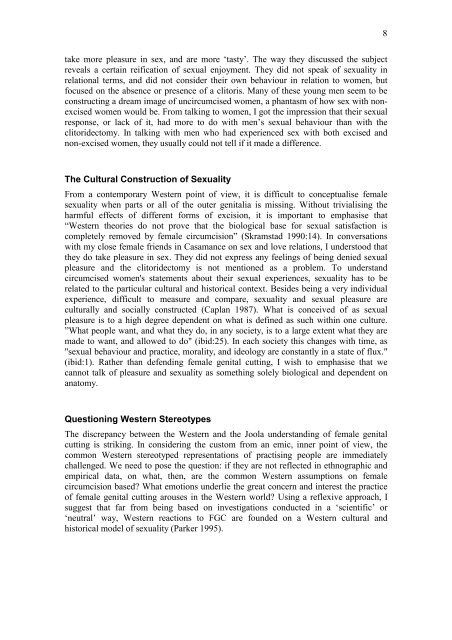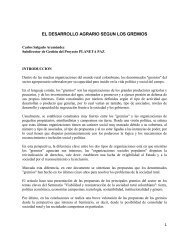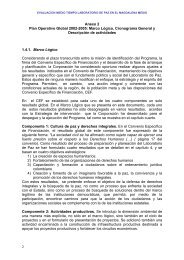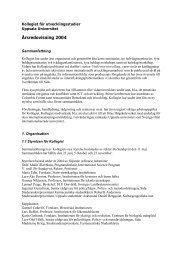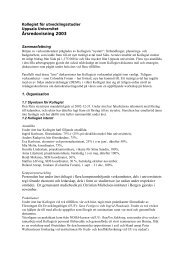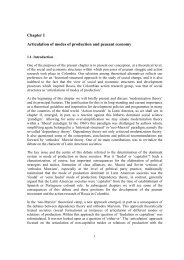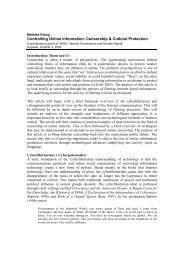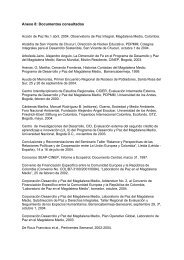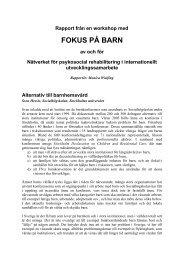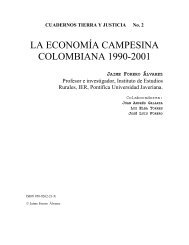A Reflection on the Cultural Meanings of Female Genital Cutting ...
A Reflection on the Cultural Meanings of Female Genital Cutting ...
A Reflection on the Cultural Meanings of Female Genital Cutting ...
You also want an ePaper? Increase the reach of your titles
YUMPU automatically turns print PDFs into web optimized ePapers that Google loves.
8<br />
take more pleasure in sex, and are more ‘tasty’. The way <strong>the</strong>y discussed <strong>the</strong> subject<br />
reveals a certain reificati<strong>on</strong> <strong>of</strong> sexual enjoyment. They did not speak <strong>of</strong> sexuality in<br />
relati<strong>on</strong>al terms, and did not c<strong>on</strong>sider <strong>the</strong>ir own behaviour in relati<strong>on</strong> to women, but<br />
focused <strong>on</strong> <strong>the</strong> absence or presence <strong>of</strong> a clitoris. Many <strong>of</strong> <strong>the</strong>se young men seem to be<br />
c<strong>on</strong>structing a dream image <strong>of</strong> uncircumcised women, a phantasm <strong>of</strong> how sex with n<strong>on</strong>excised<br />
women would be. From talking to women, I got <strong>the</strong> impressi<strong>on</strong> that <strong>the</strong>ir sexual<br />
resp<strong>on</strong>se, or lack <strong>of</strong> it, had more to do with men’s sexual behaviour than with <strong>the</strong><br />
clitoridectomy. In talking with men who had experienced sex with both excised and<br />
n<strong>on</strong>-excised women, <strong>the</strong>y usually could not tell if it made a difference.<br />
The <strong>Cultural</strong> C<strong>on</strong>structi<strong>on</strong> <strong>of</strong> Sexuality<br />
From a c<strong>on</strong>temporary Western point <strong>of</strong> view, it is difficult to c<strong>on</strong>ceptualise female<br />
sexuality when parts or all <strong>of</strong> <strong>the</strong> outer genitalia is missing. Without trivialising <strong>the</strong><br />
harmful effects <strong>of</strong> different forms <strong>of</strong> excisi<strong>on</strong>, it is important to emphasise that<br />
“Western <strong>the</strong>ories do not prove that <strong>the</strong> biological base for sexual satisfacti<strong>on</strong> is<br />
completely removed by female circumcisi<strong>on</strong>” (Skramstad 1990:14). In c<strong>on</strong>versati<strong>on</strong>s<br />
with my close female friends in Casamance <strong>on</strong> sex and love relati<strong>on</strong>s, I understood that<br />
<strong>the</strong>y do take pleasure in sex. They did not express any feelings <strong>of</strong> being denied sexual<br />
pleasure and <strong>the</strong> clitoridectomy is not menti<strong>on</strong>ed as a problem. To understand<br />
circumcised women's statements about <strong>the</strong>ir sexual experiences, sexuality has to be<br />
related to <strong>the</strong> particular cultural and historical c<strong>on</strong>text. Besides being a very individual<br />
experience, difficult to measure and compare, sexuality and sexual pleasure are<br />
culturally and socially c<strong>on</strong>structed (Caplan 1987). What is c<strong>on</strong>ceived <strong>of</strong> as sexual<br />
pleasure is to a high degree dependent <strong>on</strong> what is defined as such within <strong>on</strong>e culture.<br />
”What people want, and what <strong>the</strong>y do, in any society, is to a large extent what <strong>the</strong>y are<br />
made to want, and allowed to do" (ibid:25). In each society this changes with time, as<br />
"sexual behaviour and practice, morality, and ideology are c<strong>on</strong>stantly in a state <strong>of</strong> flux."<br />
(ibid:1). Ra<strong>the</strong>r than defending female genital cutting, I wish to emphasise that we<br />
cannot talk <strong>of</strong> pleasure and sexuality as something solely biological and dependent <strong>on</strong><br />
anatomy.<br />
Questi<strong>on</strong>ing Western Stereotypes<br />
The discrepancy between <strong>the</strong> Western and <strong>the</strong> Joola understanding <strong>of</strong> female genital<br />
cutting is striking. In c<strong>on</strong>sidering <strong>the</strong> custom from an emic, inner point <strong>of</strong> view, <strong>the</strong><br />
comm<strong>on</strong> Western stereotyped representati<strong>on</strong>s <strong>of</strong> practising people are immediately<br />
challenged. We need to pose <strong>the</strong> questi<strong>on</strong>: if <strong>the</strong>y are not reflected in ethnographic and<br />
empirical data, <strong>on</strong> what, <strong>the</strong>n, are <strong>the</strong> comm<strong>on</strong> Western assumpti<strong>on</strong>s <strong>on</strong> female<br />
circumcisi<strong>on</strong> based? What emoti<strong>on</strong>s underlie <strong>the</strong> great c<strong>on</strong>cern and interest <strong>the</strong> practice<br />
<strong>of</strong> female genital cutting arouses in <strong>the</strong> Western world? Using a reflexive approach, I<br />
suggest that far from being based <strong>on</strong> investigati<strong>on</strong>s c<strong>on</strong>ducted in a ‘scientific’ or<br />
‘neutral’ way, Western reacti<strong>on</strong>s to FGC are founded <strong>on</strong> a Western cultural and<br />
historical model <strong>of</strong> sexuality (Parker 1995).


